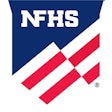![[Photo by Shutterstock]](https://img.athleticbusiness.com/files/base/abmedia/all/image/2016/07/ab.SafetySec616_feat.png?auto=format%2Ccompress&q=70&w=400)
This article appeared in the June issue of Athletic Business. Athletic Business is a free magazine for professionals in the athletic, fitness and recreation industry. Click here to subscribe.
 Tim Philippart is a former sports equipment and bleacher inspector.
Tim Philippart is a former sports equipment and bleacher inspector.
During my 15-year career as a sports equipment and bleacher inspector, I gained access to more than 3,000 facilities, including K-12 schools (public, private and charter), colleges and universities. In that time, I encountered the full gamut of security protocols, from the non-existent to those rivaling a minimum-security prison — with private security officers and metal detectors.
The vast majority of the schools fall somewhere in between. Here's how a visit to the average school unfolds, based on my experiences: The school keeps its doors locked, and outdoor or entryway buzzers and cameras may be used to check in visitors. A visual inspection, along with a verbal identification and a statement of the visitor's intent (to go to the guidance office, work on the plumbing, fix the bleachers, etc.) is enough to admit him or her.
Once admitted, he or she proceeds to the office, which is usually close enough to the entrance that someone in the office — a secretary or student aide — can observe the visitor's approach. The visitor gets an identification tag and is directed to his or her destination. Often, the school official being visited is notified that the guest is on his or her way, or the school representative comes to the office to accompany the visitor.
That's not to say that this quite typical experience represents the very best practice, however. These schools have implemented some security protocols, but have not yet instituted all of the practices that would raise them to the next level. From the perspective of a contractor, there are four things that stand out about the safest schools:
1. The visitor entry is well marked and visitor parking is clearly identified. Student parking is identified as "student parking only." I have encountered facilities that have no doors identified as a visitor entrance. In such situations, a visitor might find himself anywhere in the building — a hallway crowded with students passing from one class to another, for example. Students might be so helpful as to point the visitor in the direction of the office before rushing off to their destinations.
2. Visitors are admitted into an office and not into a hallway. One scenario I encountered started with a door marked, "All visitors enter here and must check in at the office." The door was right next to the flagpole, which is often another indicator of an appropriate entrance door. There was no lock, buzzer, staff person or other means of access control, however. Once inside, a visitor looks left and right, with no clear indication of which way will take him or her to the office. At the safest schools, there is no such ambiguity — visitors are met at the door and escorted to the office, or enter directly into an administrative area.
3. Identification and documentation are always required. A sign-in sheet at the office records time in, name, company, purpose of visit, as well as a space to sign out and note the time. The purpose for the visit should be clearly stated and confirmed by the appropriate school personnel. In-school identification must always be displayed. In some schools, a driver's license is traded for an in-school identification and held until the visitor returns and properly checks out of the building.
4. The safest schools rarely let visitors move without escort in their facilities. Once they have been buzzed in at the door or admitted by a security guard or administrator, visitors are never to be left to find their own path. After they have signed in at the main office, they are either escorted to their destination by appropriate personnel, or they remain in the office until their intended contact comes to greet them.
Perhaps the most important aspect of an access-control strategy is making sure all students and staff members are aware of the policies. I have found that students will open a door for just about anyone. I have knocked on locked glass doors late at night and have been let in. On only one occasion in all my years of visiting schools did a student deny me entrance. She was walking down a long hallway with a wall of locked glass doors. After first ignoring me and continuing down the hall, she returned, pointed to a bar on the door, which I had not noticed, and said, "I'm sorry, I can't let you in. The right door is on the other side of the building."
She had been unsure of what to do in the situation, though her response was the appropriate one. Signage at unauthorized access points directing visitors to the proper entrances would help prevent such situations, as well as an advisory to visitors such as, "Students and teachers are prohibited from opening this door to visitors."
Having a well-communicated procedure in place not only helps avoid confusion for well-intended visitors, it sets an expectation for students and staff. Someone coming in through the wrong door or moving without a visitor ID or escort will stand out more clearly.
This article originally appeared in the June 2016 issue of Athletic Business with the title "A visitor's view: lapses in access control at schools"




































